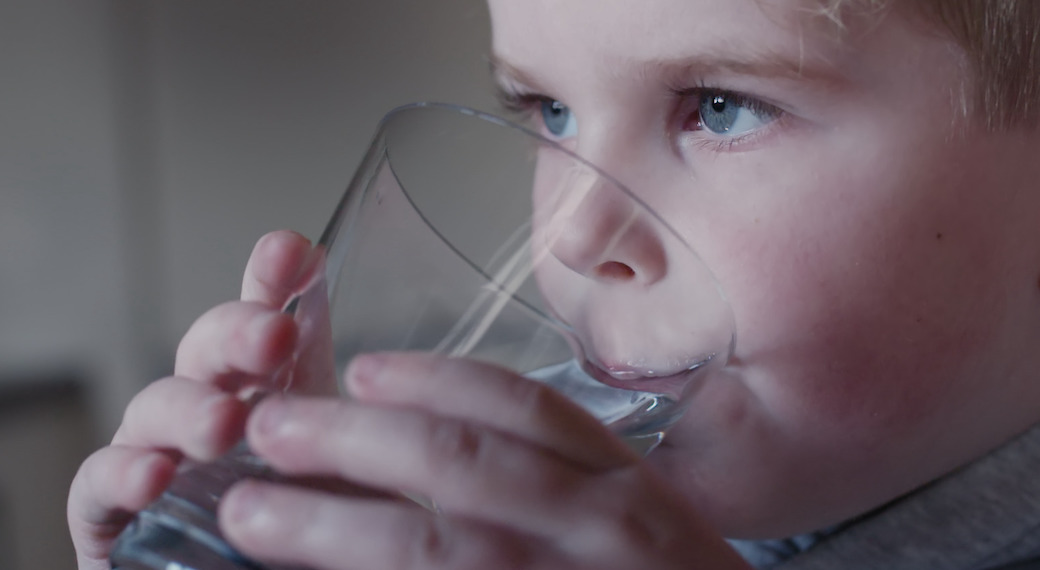Victorian utility tackles water quality to improve community heath

The water available to residents of the south-western Victorian towns of Portland, Heywood and Port Fairy is safe to drink.
It is not for health reasons that the people living there avoid the water, preferring bottles bought from the supermarket, their own filtration systems, or even mixing what comes out of the tap with sugary cordial.
The water for these three towns is drawn from the Dilwyn aquifer, an ancient source of groundwater underlying much of south-west Victoria. And this water, seeping through rock profiles between 700 m and 1.3 km beneath the earth’s surface, picks up a lot of mineral salts on its way to the consumer.
“While the water meets the Drinking Water Guidelines, the salt is at a level where people can taste it,” explained Ian Bail, Wannon Water’s General Manager, Strategic Services.
“The taste level becomes noticeable at about 300 parts per million and the water supplied to these three towns is about 600 to 900 parts per million.”
In short: to a lot of the people in these towns, the drinking water tastes pretty unpleasant. So they avoid it.
“For those communities, it's an equity issue that we deal with the aesthetic parameter,” Bail said.
“That led us to start thinking about how if we can change the quality of the water – if we improve that by removing the saltiness – what will that actually achieve? It won't just be a better taste; surely it has other impacts as well.”
Addressing the problem
Identifying these other impacts was important to the utility because, until now, Wannon Water had been unable to secure the necessary funding to undertake the expensive measures needed to improve the water’s unpleasant taste, which likely involves adding reverse osmosis treatment to each town’s supply.
And that process of removing the salt also removes fluoride from water – which, ironically, is naturally at an ideal level to promote dental health.
“You've got the irony of natural fluoridation, but many people aren’t drinking it because it's got salt in it – so we need to build some fluoride treatment plants as well,” Bail said.
“So there's the infrastructure to take the salt out, fluoridation to put fluoride back in, and then there's peripheral bits and pieces around disposing of salty brine streams from reverse osmosis plants.
“When we add all of that up for the three towns – and allowing for the very dramatic increase in capital costs for infrastructure over the last couple of years – the project now costs out at around $52 million.
“Now, this is for a total population of about 15,000 people; hence, the communities themselves can't pay.”
Home and business impacts
But what if Wannon Water could show that treating the unpleasant flavour of the water would have advantages beyond merely addressing the residents’ dislike of the taste?
To do so, the utility produced a business case with consultancy GHD and Deakin University that highlighted further ramifications of a too-salty water supply.
“One is that the taste of the water is leading people to make choices about other things that they consume. And, generally in those communities, we see high rates of sugar-sweetened beverages, we see lower rates of drinking water consumption, we see high rates of bottled water purchases,” Bail said.
“The choices people are making with avoiding the drinking water supply are leading them to make poor health choices, and we see significantly increased rates of obesity and poorer rates of dental health.”
Another consequence was on the cost of living and commercial viability of businesses in the towns.
“The saltiness means that your household hot water service, your kettle and the other infrastructure in your house wears out much more quickly than it would on a less salty surface-water supply. So consumers, while they're not necessarily noticing it or reporting it, are actually spending a lot more maintaining their houses because of that saltiness than they otherwise would,” Bail said.
“The same goes for commerce and industry – cafés with coffee machines are having to bring in extra cleaning and to bring in water from elsewhere to put through their coffee machines.”
The effects are being felt at a larger scale by bigger businesses as well, such as an aluminium smelter in Portland and a pharmaceutical manufacturer in Port Fairy. Both would save significant costs of treatment and reduce their overall water use if the aesthetic water quality was improved.
Bail also sees addressing the problem as being an important part of addressing Indigenous disadvantage, with Heywood having ten times the average Victorian proportion of First Nations peoples in its population, and the town being the gateway to the World Heritage-listed cultural heritage landscape of Budj Bim.
The value of aesthetics
The evidence marshalled by the utility proved compelling. In May, the Australian Government announced it would provide $26.1 million from the National Water Grid Fund to address the problem.
Combined with Wannon Water’s own financial commitment to the project, that’s enough for Wannon Water to deliver on its commitment to secure a better tasting water supply for the towns.
According to Bail, residents should have better tasting water within six years – and for some, possibly in as few as three years.
“It really is a pilot for valuing aesthetic water quality and acting in response to customer voices” he said.
“Making investment decisions about how suitable water is for what it's intended for – not just whether it's safe.”
